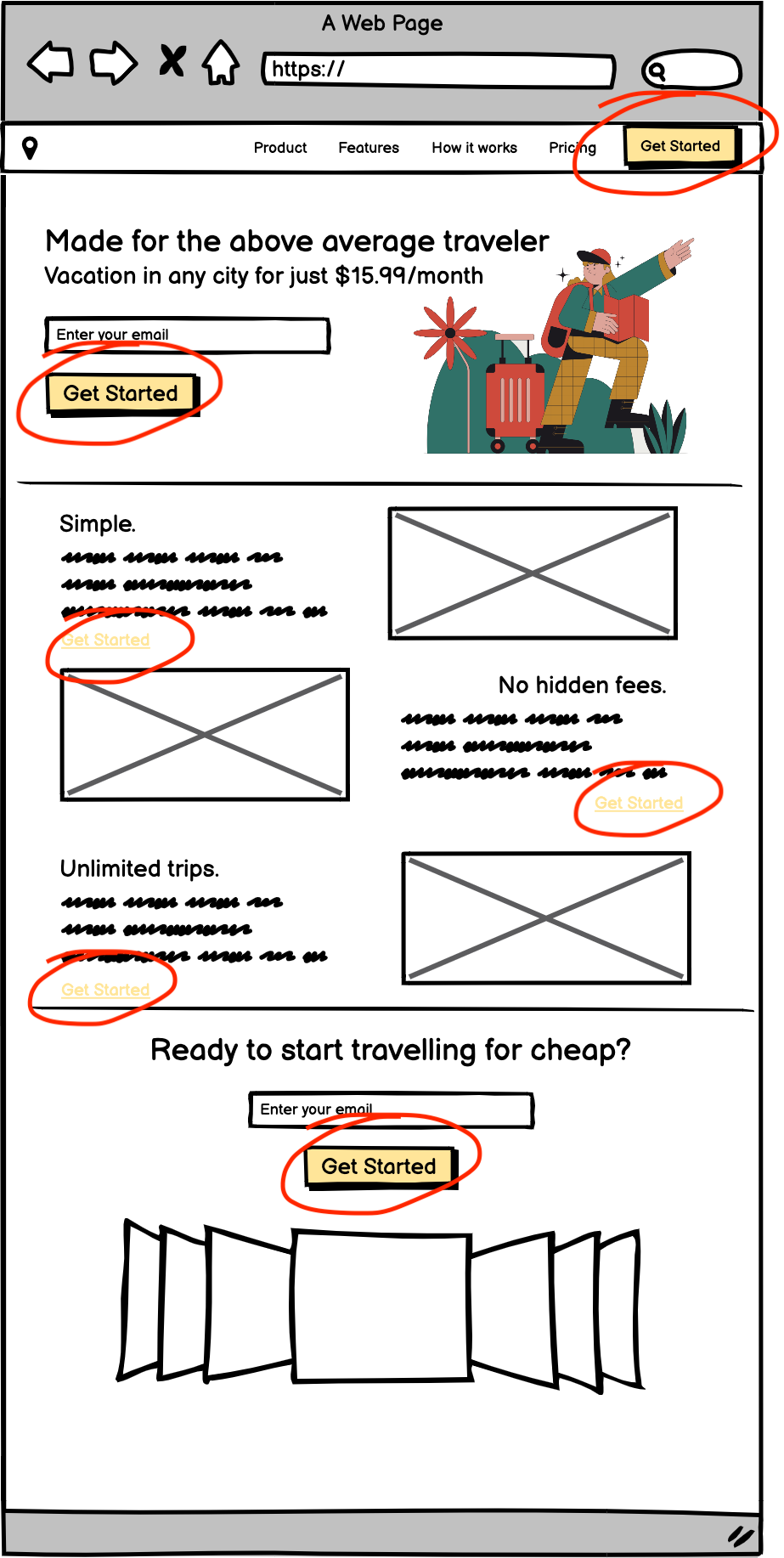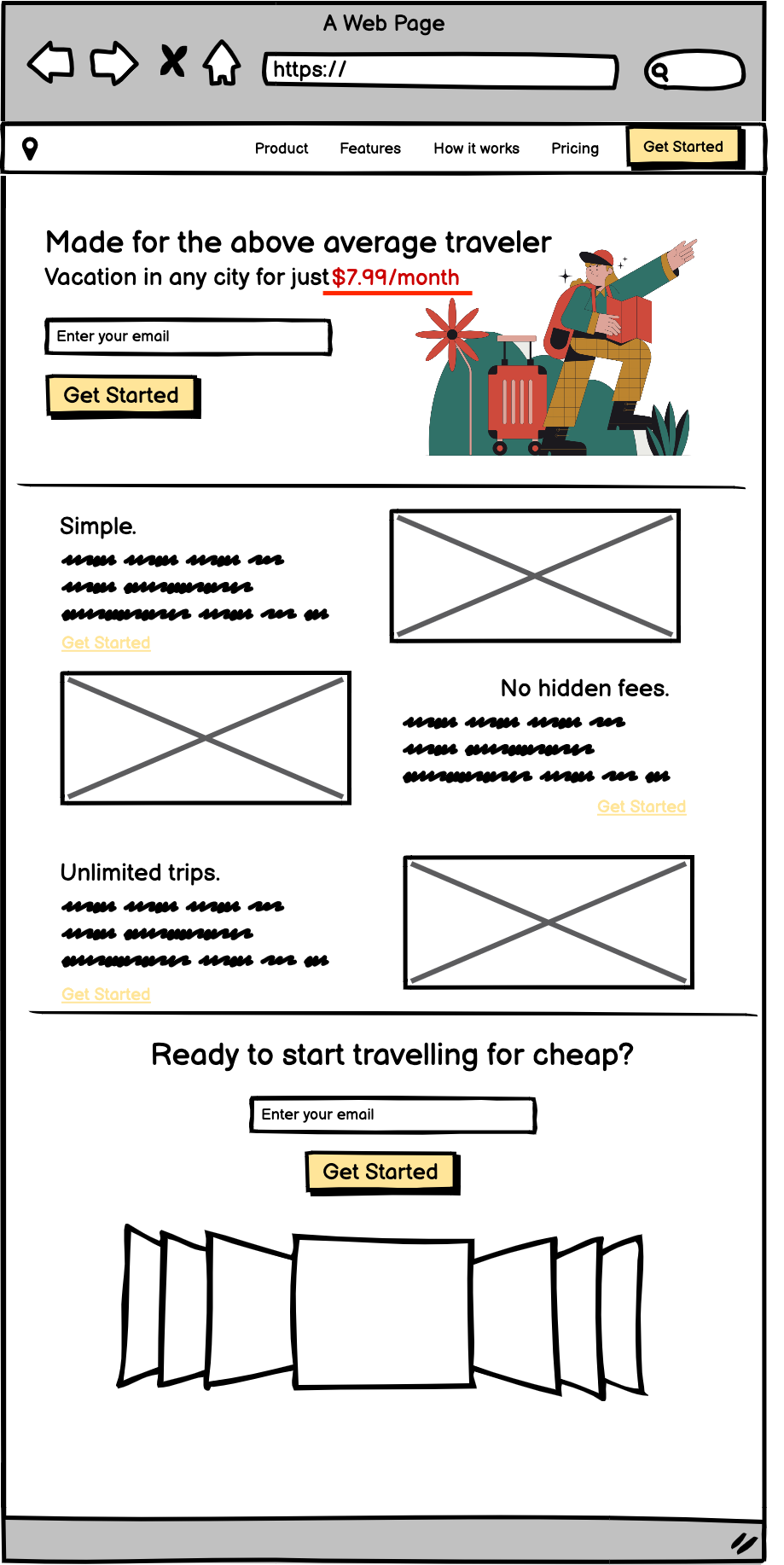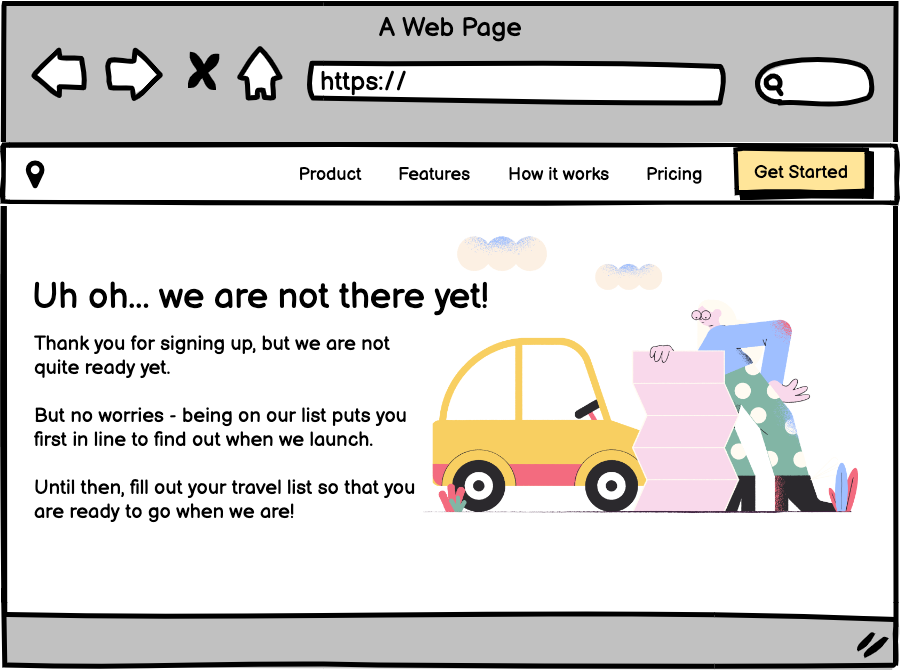Fake it till you make it: building a Fake Door MVP
Have you ever heard of the fake door MVP? Even if you haven't, you might have used one.

Building, launching and scaling a digital product requires a lot of resources: time, focus, money (lots of it) and resilience to name a few. Many founders spend months, and sometimes years, to build an MVP (or even a full-on) product only to find out that nobody wants it. So what do you do in cases when you are not certain if there is enough interest and demand? You build a fake door MVP.
What is a "Fake Door MVP"?
A Fake Door MVP (also called "Pretotyping") is a strategy you can implement to test your potential market before spending time and money on any sort of designs or development. This means that you don't need to build anything - but you do need to make people think that you are.
In most cases, a Fake Door MVP is simply a landing page about your product, what it does, how much it costs etc. - with CTAs (Call-to-actions) like joining a waitlist, requesting a demo etc. The website/product needs to look just like a real company's landing page/app up until users show interest - that's when you hit them with the news that the product doesn't exist, yet. Even though it might feel like you are "lying" to your potential customers, there is nothing wrong with showing them what you *want* to build and getting feedback from them. Nobody knows how far along on your product journey you are - the fact that you built a landing page already shows you are onto it and you have intentions to deliver.
Why should I build a Fake Door MVP?
- It's fast, easy and in many cases free. No coding skills or lengthy timelines required. You can launch a fake door MVP within just a couple of hours.
- No risk - if your product doesn't show interest, no big deal! You didn't lose much and the feedback will help you pivot.
- Easy to test different pricing models - you can easily experiment with changing the "imaginary" price and see how people respond to it.
- It will help you understand your users and market better.
- It will help you build a waiting list of early adopters who can become your first clients once you actually launch.
- Many famous companies once got their start with a fake door MVP, one of which was Dropbox! Their landing page was extremely minimalist and simply contained the video below:
What's the catch?
When building a fake door MVP you need to keep in mind that the data you collect might not be 100% accurate or representative of your actual users. People might click on a button or join a waitlist for many reasons - it doesn't always mean they will actually follow through with a purchase. Moreover, if you launch a buggy or ugly-looking landing page, it might turn off users and damage your reputation and traction as a result. But don't let this discourage you - in my opinion, some feedback is better than no feedback. Receiving at least some interest has more potential than shooting in the dark.
In my opinion, the hardest part of doing a fake door MVP is not making it, but rather having the patience needed to go through a proper research phase. When founders are excited about their idea, they tend to jump in quickly and often times make decisions prematurely and out of excitement.
How do I build one?
You can easily use any of the famous website builders like Wix, Weebly, Squarespace etc. I am actually a big fan of the Unicorn Platform which lets you set up a landing page within minutes, it's very easy to use and includes the exact features you need.
When it comes to what to put on the landing page, you need to make it look like a real company's landing page: with pricing/pricing plans, features, demos on how it works etc.



- Minimize the number of clicks, and get users' information as early as possible. Having one email field, or one CTA button for making a "purchase" is enough to capture some initial data.
- Some people believe that you shouldn't be asking for an email right away as users might be interested, but hesitant to share their email. This is up to you - if building a waitlist of as many users as possible is important to you, then adding the email early on is preferred. If instead you are purely testing the interest, you can only add a "Purchase" CTA button and use that as your primary metric for interest. Once you tell users that the product is not ready yet, you can ask them to be notified via email (which they might not be willing to do).
- Use your collected data the right way: sometimes it's not the product, it's the audience. If you are marketing your landing page to the wrong audience, and nobody follows through - you might think nobody wants your product. So make sure that your fake door MVP lands in front of the right eyeballs.
- Just building the website is not enough, you must actually put it out there. When doing so, make sure you don't just send it to people you know who are well aware of what you are up to. Having your grandma sign up is not true interest in the product (unless of course, your product actually is for your grandma). It's common to set up some Facebook ads where you can select your exact target audience and see how they respond. Due to FB ads being so saturated nowadays, running ads can get really expensive. Some other ideas to market you website is to send it out to college listservs, post on Reddit/Quora, post in Facebook groups that contain your target audience etc.
- Don't A/B test too many components, but definitely experiment with what combinations garner the most interest. Switch up the pricing, the product features, the colors and see how your metrics change. But don't switch up too many at a time, because you might lose track of which one drove more/less interest.
Conclusions
You don't "have" to build a fake door MVP, but it can often times prove to be a very valuable asset before you invest your time and assets into your idea. You can use it as a way to evaluate interest, build out a waitlist of excited potential users early on and A/B test many hypotheses such as pricing, branding and actual product features.